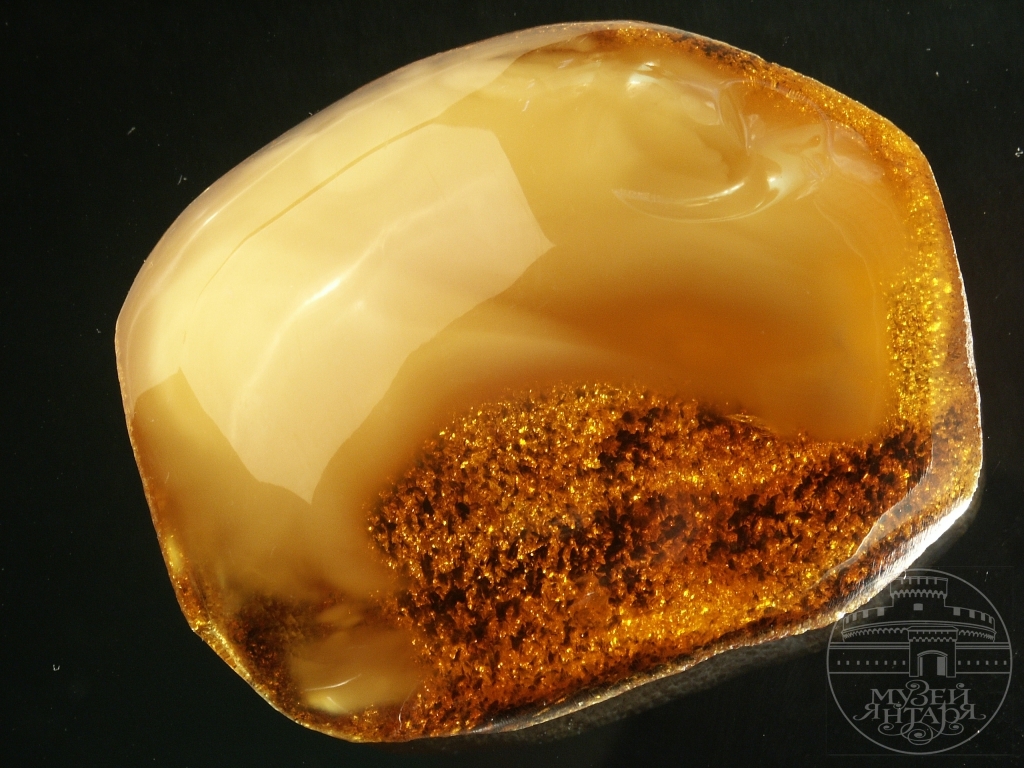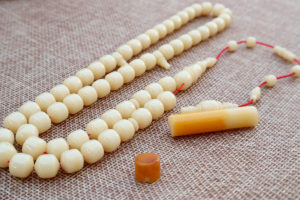Amber differs in shape, colour and the degree of transparency. The shape of an amber piece was determined by where the oleoresin was flowing from. It was going on either inside or on the surface of the trunk of a damaged tree. In case of the abundant discharge the resin was flowing down as drops, icicles, inleakages. In the collection of the Kaliningrad Amber Museum the largest drop is a little larger than 5 cm in diameter. But there are also larger pieces elsewhere – of the size of a goose-egg. The length of icicles is 10-12 cm. Small lensing and falcated stones probably appeared in the «resin pockets» that were formed in the bags between the annual rings of trees. Traces of a tree texture can often be seen on the fossilized amber pieces here. The location of resin between the trunk and the bark resulted in the formation of the subcortical forms. The pattern of the wood or the bark can be well seen on them.
Pieces that appeared in large subcortical bags can weigh up to two kilograms. Even larger samples of amber appeared in the spots of large open wounds on the tree trunk. The resin kept flowing for a long time and accumulated in the ground.
The largest of all the known samples of succinite is kept in Berlin and weighs 9 kg 750 g. The Russian giant from the collection of our Museum is much smaller – 4 kg 280 g.
The intensity of the coloration, the degree of transparency or non-transparency of the gem depend to a great extent on the microscopic cavities that can be found in every stone, on their number, size and location.
The following varieties of amber are distinguished:
Transparent
in which one can find isolated cavities:

Semi-transparent
in which there are large clusters of cavities that lead to haziness (cloudy, hybrid):

Non-transparent (bone and foamy)
where the amount of cavities can reach 900 000 per 1 cubic meter:

The nature endowed amber with incredible richness of colors. There are bright yellow, reddish pieces reminding of a tongue of flame, as well as «honey» pieces. There are also «cloudy» pieces – they are sort of hazed with fleecy clouds. One can also find amazingly beautiful amber pieces of blue and green shades.
Amber is heterogeneous in its composition. Its basic ingredients are carbon (approximately 78%), oxygen (11%), hydrogen (10%). The following formula of amber as a mineral is usually given – C 10 H 16 O.
The Baltic gem is a relatively soft stone: it can be scratched with a knife. The amber hardness according to the Mohs’ scale ranges from 2 to 3. To compare: the hardness of gypsum is 2, quartz is marked 7, diamond has the degree of hardness of 10. The amber is brittle, it can be easily broken if hit or if it falls down, but at the same time it is pliant. And this is a very valuable quality thanks to which the stone can be easily treated. Amber can be sawed, cut, drilled, ground and polished. When heated it first grows soft and then melts at the temperature of 315-350C. This quality is used when heating and pressing amber. Amber is able to oxidize under the influence of the oxygen in the air.
Source: Amber Museum




